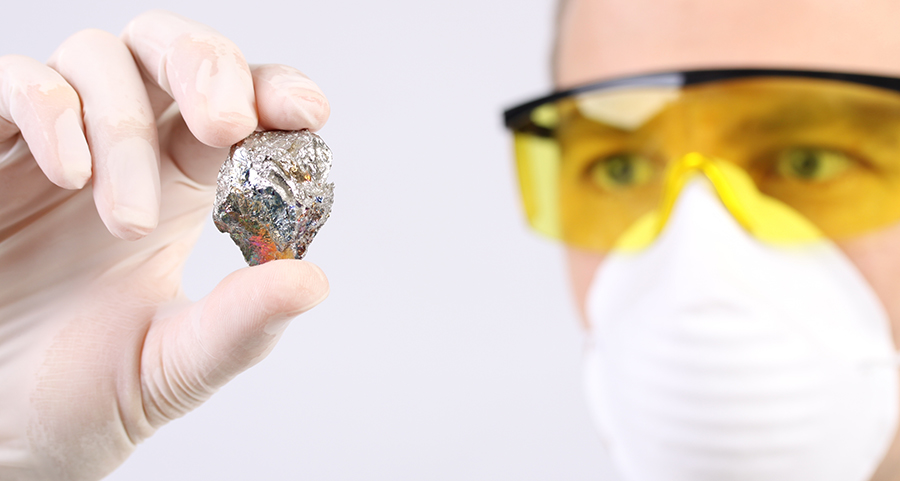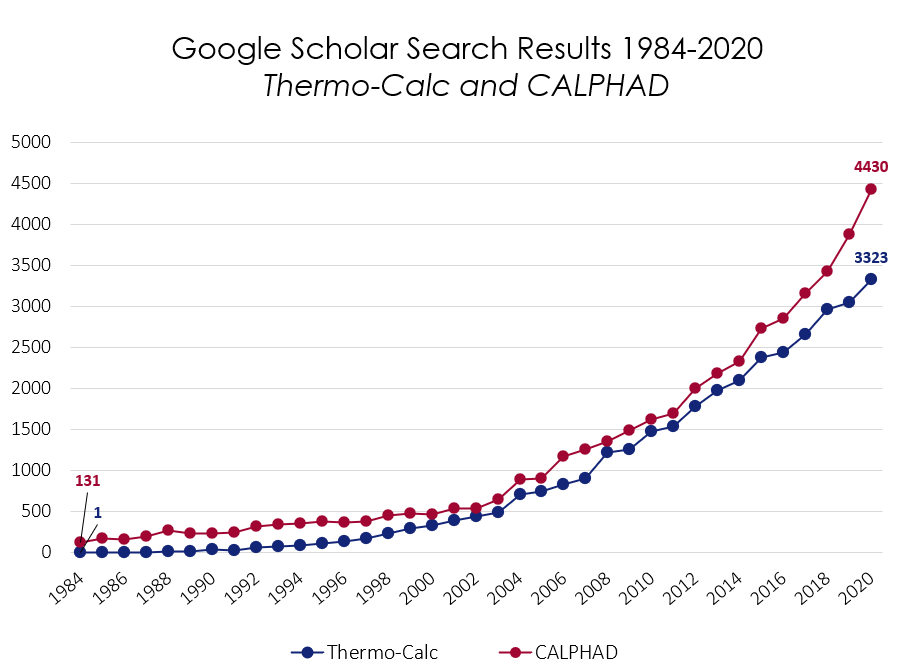CALPHAD Use Continues to Increase in Materials Research


Figure 1. Results of Google Scholar searches for Thermo-Calc and CALPHAD from 1984 to 2020. Search results for the two terms have been trending up for over 30 years and have been closely linked throughout their history.

Figure 2. Results of Google Scholar searches for Thermo-Calc and CALPHAD from 1984 to 1992. A closer look at these years shows some disparity in growth trends between the two terms, but overall growth for both.

Figure 3. Results of Google Scholar searches for Thermo-Calc and CALPHAD from 1992 to 2020. Both terms have seen year-over-year increases in citations throughout this entire period.